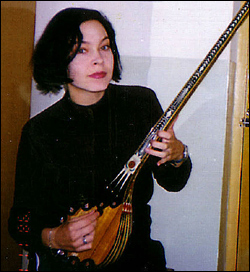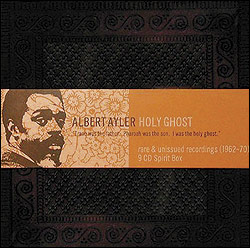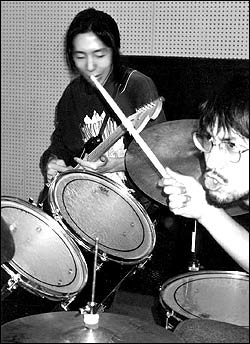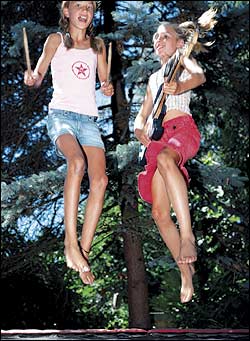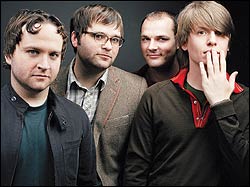WHAT’S THAT SOUND? It’s “Reach Out I’ll Be There.” Whose song is it? It’s a Motown record; that’s the first thing anyone can hear about it. But whose song is it? It’s the Four Tops’ recording. Right, but whose voice are we hearing? Depends what you mean. The lead voice on virtually all of the Tops’ hits belonged to Levi Stubbs, the least-known-by-name great singer of the ’60s. (That’s partly because he never demanded top billing; his solo career consisted of providing the singing voice of the man-eating plant in 1986’s Little Shop of Horrors. It’s also partly because, more than any other group, the Four Tops were shaped by the Motown machine.) But who’s he singing for—whose words are those, and whose thoughts, and whose melody? The song itself is by Brian Holland, Lamont Dozier, and Edward Holland Jr., a three-person entity that also wrote hits for the Supremes and others, and usually went by a shorter name of its own: Holland-Dozier-Holland, or H-D-H. So who’s responsible for “Reach Out,” ultimately?
Abdul “Duke” Fakir has been one of the Four Tops since the group formed 50 years ago. “Berry Gordy [who ran Motown in the ’60s] thought Holland-Dozier-Holland would be a good combination with us,” he says. “For four, five, six months, we got to know each other—we were hangout buddies. They found out a lot about us. When they started writing, they knew how we sang, and they knew our stories. A lot of songs were based on things that had happened to us, with women and so forth. They were great writers.”
The new Four Tops Anthology—50th Anniversary (Motown/Chronicles) documents the group’s hits, which span half of those 50 years. It starts in 1964, with their first Holland-Dozier-Holland single, “Baby I Need Your Lovin’,” and tracks them as they follow where the fashion of pop music leads. (When “Back Stabbers” was a hit for the O’Jays, the Tops recorded the soundalike “Are You Man Enough”; when they had their first No. 1 hit with “I Can’t Help Myself,” they followed it with the aptly titled clone “It’s the Same Old Song.”) After H-D-H left Motown in 1967, the Four Tops turned to other writer-producers to put the words in their mouths: first Frank Wilson; then, in the early ’70s, Dennis Lambert and Brian Potter; then more and more others, including the group’s own Lawrence Payton. But they’d usually sing anything: show tunes, psychedelia, “MacArthur Park”—a favorite of Fakir’s. “The good ones, especially, felt like our songs,” he says. “Every so often, when we got something that wasn’t that great, we felt like we were singing the writer’s song. Some of them we’d sing for commercial value—those were the people’s songs. And some we’d think, ‘This is just what you’re trying to fill the album with.'”
A DIFFERENT SOUND—this time it’s “Auld Lang Syne.” Whose song is it? It’s being played by Amps for Christ—the long-running, serenely abrasive electric folk project of a professional instrument-maker who goes by the single name Barnes, and his occasional guests. Two versions of “Old Lang Syne” [sic], played on guitars that sound like bagpipes, anchor AFC’s splendid seventh album, The People at Large (Kill Rock Stars). But whose song is it? It’s usually attributed to the 18th-century Scottish poet Robert Burns; Burns, though, claimed that it was an “old song and tune” that he’d merely written down. (The familiar New Year’s Eve tune—which wasn’t Burns’ original choice!—and somewhat similar words had been floating around for decades, and perhaps longer.)
The song belongs more to posterity than to anyone in particular, which gives it a political point here. The title of The People at Large, Barnes explains via e-mail, “refers to what the Senate was originally supposed to represent, the term used in the original language of this nation’s founding. . . . It’s a jab at the Senate, because it doesn’t represent the people now, but corporate interests instead.” The album’s loosely organized around the idea of “the people’s songs,” although hardly for their “commercial value”—its repertoire is a jumble of folk tunes from the British Isles, raga-inspired instrumentals, gristly guitar noise, spoken-word poetry, and meditative, fuzzed-out original songs. The album wears its politics on its hand-colored sleeve. It’s an earthy and idiosyncratic piece of work, and it’s anticorporate by example; Barnes and company’s work is as far from commercial oversight as it’s possible for a mass-reproduced $15 subcultural fetish object to be.
There is, obviously, something to be said for that approach. But it’s got its dangers, too. Here’s Duke Fakir, one more time: “‘Reach Out I’ll Be There’—when we sang on that, Levi and I thought it wasn’t too cool. ‘I don’t know,’ we said, ‘I don’t really like that.’ When it came back, though, Berry Gordy called us into his office and said, ‘Make sure all your stuff is ready and packed—get ready for some world tours, because you’re going to have a hit.’ He played us ‘Reach Out,’ and I said, ‘Whoa, you’re going to release that?’ But then we heard it on the radio, and he was right. We’d have tossed that one down the drain, if we’d had creative control.”
